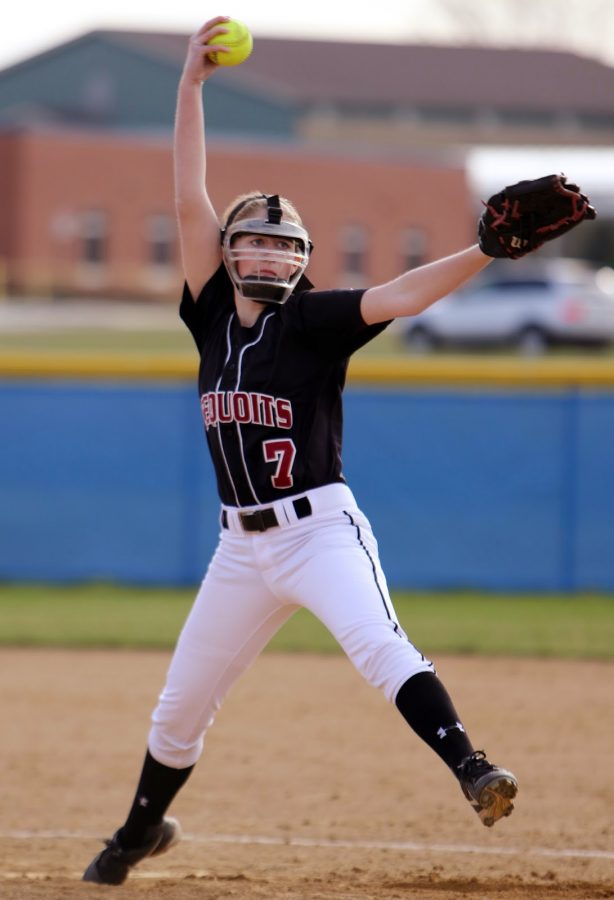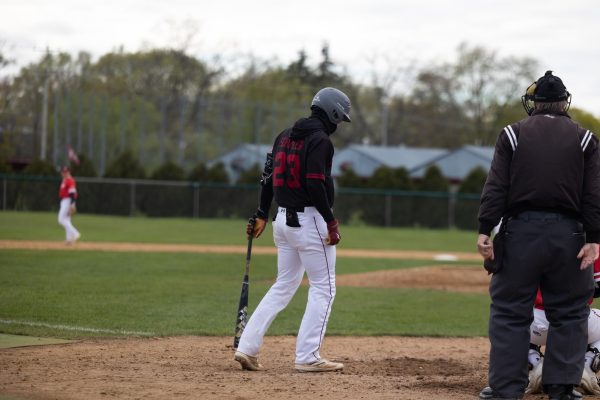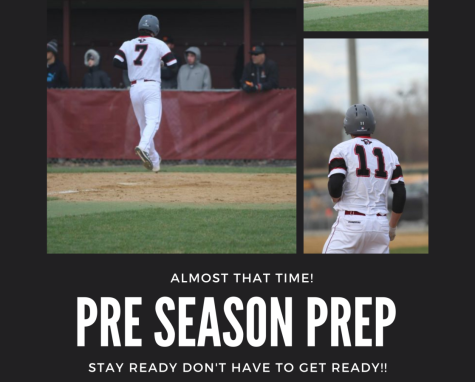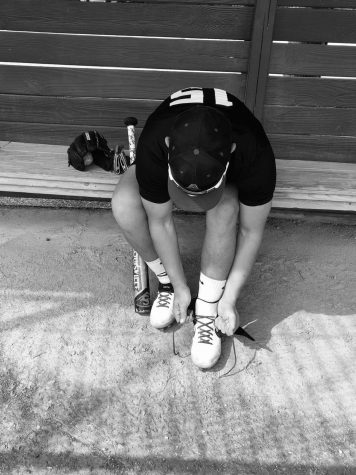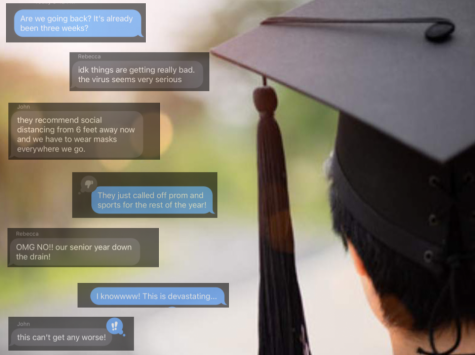Why Hitting A Softball Is Harder Than Hitting A Baseball
While batting is difficult in both sports, one is more difficult than the other.
Hannah Cook pitches a ball in a game against Warren Township High school back in April of 2015.
There are many factors that come into play when hitting a softball and a baseball. The speed of the ball, the size, the distance thrown are all parts the decision, but which one is harder to hit always gets brought up in discussion.
In baseball the mound to home plate is 60 feet and six inches, while in softball home plate is just 43 feet away. Fox Sports Networks Sports Science discovered that if a baseball is thrown at 95 mph at a batter, then they would have .395 seconds to react to the ball. If a softball pitcher threw a ball 70 mph at home plate, the batter would have .350 seconds to react to the ball.
While baseballs are thrown at a higher speed and can be more difficult, the smaller field in softball gives the batter less time to react; making it more difficult to hit the ball. Even though speed and distance do play a large factor, it’s not the biggest.
The difference between the way a baseball and softball is thrown has a major impact. According to the East Valley Tribune, when a baseball is thrown overhand, gravity takes effect on it and pulls the ball down. It is much easier for a batter to adjust to the ball and lower their arms to hit the ball compared to a softball pitcher.
A softball is thrown using a windmill pitch. After the ball is thrown it travels upward. If a batter miscalculates, it is much more difficult or nearly impossible for a batter to raise their arms and hit after the rise of the ball. Once the ball is hit, depending on whether it is a softball or baseball, there will be different results.


